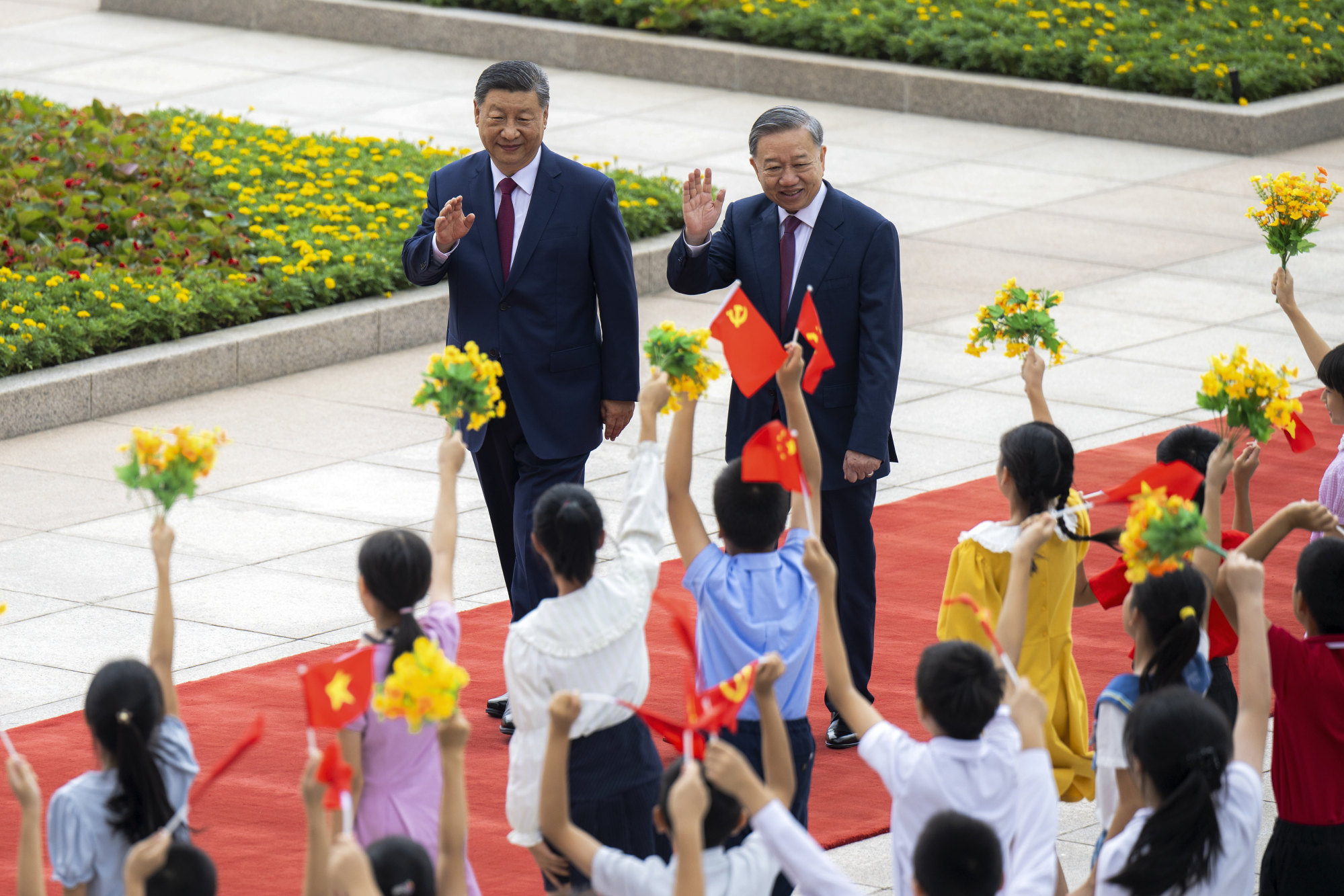China and Vietnam issued a joint declaration on Tuesday vowing to better manage and resolve their disputes over the South China Sea through friendly consultations.
The declaration came at the end of Vietnamese Communist Party chief To Lam’s official visit to China. In the document, both sides renewed a pledge made by Lam’s predecessor, Nguyen Phu Trong, and Chinese President Xi Jinping in November to build a “China-Vietnam community of shared destiny with strategic significance”.
Lam succeeded Trong as the general secretary of the Vietnamese Communist Party after the long-serving leader died last month. Lam’s three-day visit to China was his first foreign visit since becoming the general secretary, and he met Xi in Beijing on Monday.
Do you have questions about the biggest topics and trends from around the world? Get the answers with SCMP Knowledge, our new platform of curated content with explainers, FAQs, analyses and infographics brought to you by our award-winning team.
The joint declaration issued after Lam and Xi’s meeting reiterated the “high-level consensus” to jointly maintain peace and stability in the South China Sea, and mostly repeated the lines of the agreement made last year.
“[The two sides] will continue to actively seek a fundamental and sustainable solution that is acceptable to both sides through friendly consultations,” the declaration said.
The solution must be consistent with the existing basic principle agreement on maritime issues between Chinese and Vietnamese governments, as well as international laws, including the United Nations Convention on the Law of the Sea (UNCLOS), it said.
“[We] will refrain from actions that will complicate the situation and aggravate disputes,” it said.
The declaration reiterated the need for promoting joint maritime development and accelerating talks on maritime delimitation in the Gulf of Tonkin.
It also said China and Vietnam agreed to effectively implement the Declaration on the Conduct of Parties in the South China Sea (DOC), push for an earlier conclusion of the Code of Conduct (COC), while actively cooperating in maritime issues such as the conservation of biological resources and humanitarian search and rescue in the South China Sea.
While the DOC is only a non-binding guideline that calls on all parties to peacefully handle the South China Sea disputes “with restraint”, the COC, once its negotiations are completed, will be a legally binding document between China and the Asean countries designed to regulate nations’ behaviours in the disputed waters. But the negotiation of the COC has been long behind schedule.

China and Vietnam have complex and unresolved disputes in the South China Sea, alongside others including the Philippines, Malaysia and Brunei. Both China and Vietnam have made extensive claims of the resource-rich waters and built artificial islands to reinforce control of the reefs.
The two countries fought a brief war over the Paracel Islands in 1974, followed by another military conflict in the Spratly Islands in 1988. Incidents over oil and gas development or fishery rights also frequently occurred in recent years. In March, China announced its territorial sea baseline north of the Gulf of Tonkin.
Although tensions over South China Sea reefs have rapidly escalated between China and the Philippines since last year, Vietnam has taken a lower-key stance as the ruling Vietnamese Communist Party emphasises cooperation with Chinese counterparts.
More from South China Morning Post:
- Beijing seeks to boost military cooperation with Vietnam despite South China Sea dispute
- Beijing looks for echoes of past as Vietnam’s new leader To Lam visits China’s Xi Jinping
- China’s ties with Vietnam are a diplomatic priority, Xi Jinping tells To Lam on state visit
- Vietnam’s To Lam touches down in China on first overseas trip as new leader
For the latest news from the South China Morning Post download our mobile app. Copyright 2024.





